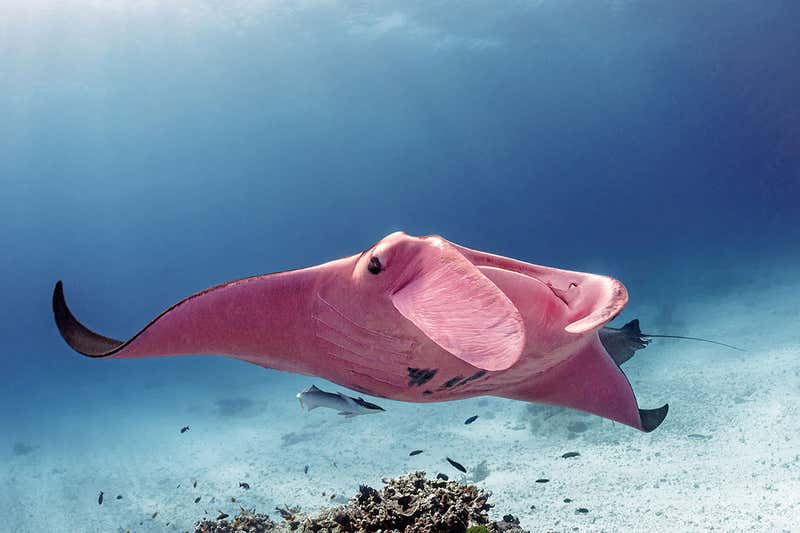Rachel Bale for National Geographic on a rare pink manta ray. Our excellent manta ray tours do not have any pink mantas but you can enjoy the company of the mantas close up. This will be an experience you’ll never forget!
Why is this manta pink? And why does it matter?
A rare pink manta ray was spotted off the Great Barrier Reef the other other day, and soon, his photo was everywhere. Inspector Clouseau, as he’s called, likely has a condition called erythrism. Like albino and melanistic animals, somewhere in his genome is probably a mutation that makes his skin pigment turn an abnormal color—pink in this case.
OK, so a pink manta ray is pretty cool in my opinion. So are “strawberry” leopards, “blonde” zebras, yellow cardinals, blue lobsters, and black panthers. Nature is constantly surprising us, and these oddities are a big part of what inspires my curiosity about the world.
Beyond the sense of wonder, there’s scientific value in highlighting and understanding creatures like this. Researchers studying Inspector Clouseau don’t yet know for sure why he’s pink, but they’re trying to figure it out—understanding this has the potential to help them understand manta evolution more broadly. Studying albino zebras has helped scientists understand the social interactions of herds. And studying black panthers (an umbrella term for any all-black wildcat) is helping us understand the trade-offs between camouflage and communication.
These animals also bring me something else: a certain joy. They stand as nature’s evidence that we don’t have to color with the same box of crayons every time.















